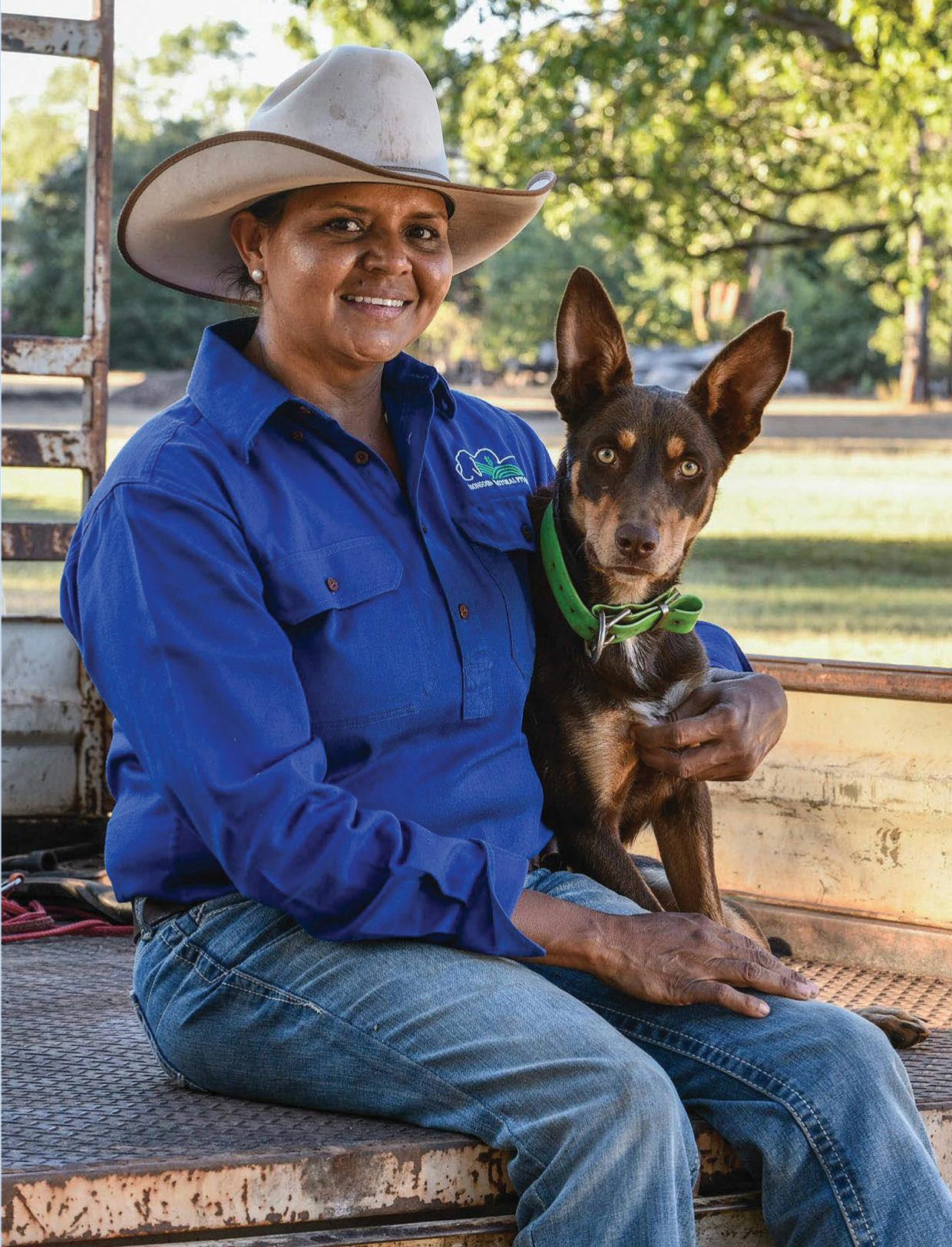
5 minute read
A dog’s life: working dogs
In
February 2021 residents in the Pilbara in WA heaved a collective sigh of relief: The drought that had gripped the region for four long years had finally broken. The unceasing lack of rain had been devastating, as Aticia Grey – a fourthgeneration grazier who recently inherited Glenforrie Station – can personally attest to.
Advertisement
So, as those first drops fell, she knew that her primary focus needed to be on regenerating the country the station sits upon while ensuring they were better set up to react when drought hits again. While other owners in the area rely upon bikes, diesel-run trucks, helicopters and other machinery, she wants to find a way that is kinder on both the environment and the cattle. And that’s where her four-legged workers are helping to shift the dial.
“The dogs were a big part in helping to manage our mob of cattle and going forward that is one of the biggest things,” the 33-year-old explains to The Weekly, having just returned from a last-minute mustering with her canine teams. “We’re having to shift one mob of cattle every month [to let the land regenerate] and I can do that with just the dogs. It’s not the big deal it would have been without them. Now we’ve got the option to shift our cattle more often and utilise and look after our feed better. As long as the dogs have water and shade and I look after them in the heat then we can do all these things that wouldn’t have been a possibility previously.”
This is just one of the many unsung benefits of enlisting working dogs that a new ABC documentary, Muster Dogs, is hoping to reveal.
The three-part series follows five farmers in different parts of the country as they each spend a year training up a young kelpie pup. And the differences the young dogs will make on both the properties they work and the farmers themselves is surprising.
CJ Scotney, a 37-year-old Indigenous station owner in the Douglas-Daly district of NT is among those taking part. Back in 2005 she witnessed a station manager working with his dogs and was so astonished at the results that she knew she would do the same when she eventually bought a property of her own.
“Those cattle were calm, they were content, they were grazing as they moved, they weren’t anxious,” she recalls. “That’s how we want our cattle.”
“Because cattle and the dogs all work on body language, they understand each other a lot better,” adds Aticia, who has written a companion book about her experiences with working dogs. “The cattle understand what the dogs are asking of them and they are happy to do it. It takes out a lot of the confusion. And for the dogs, it just comes really naturally to them.”
The Australian working dog has had a long and proud history on our farms, yet as machinery became more readily available many were phased out of their jobs. But the simple fact, say those who are leading the charge to re-enlist them in larger numbers, is that one dog can do the job of five to six humans as well as reduce the need for gas-guzzling machinery. And those cost-saving measures mean that more money can be spent on those actually driving the revenue for the farm – the stock themselves. “As a small, family-owned Australian business, it helps us to be economically viable because we don’t have to be hiring extra employees to move stock,” explains CJ. “You’re happier-minded because you know your cattle and dogs are all moving happily, so it’s also safer for everyone as well. They help us to be successful.” Joni Hall, 39, is a top cattle trainer who traverses the length of the country with her 22 dogs. They live together out of a truck and trailers as she visits various properties. There, she puts her team to work and impresses upon owners the benefits they can receive. “Let’s say you’d usually use $100,000 in labour,” she explains of the flow-on effect farmers can receive from working dogs. “That money can then go
“We have don’t tobe into better feed for your stock, better water and a better environment for your country. Plus, instead of taking a week hiringextra to do a job, you might be able to two days because the dogs don’t do it in make employeesto move stock.” as many mistakes. And the cattle won’t get as hot, so you keep weight gain on them because they’re not getting stirred up. The dogs are all better at their jobs than we are at ours, for sure.” And it’s a job the dogs also love, all three women attest. When asked if it could be considered cruel to put a dog to work, Aticia says you only need to look at her pack to see how much they love it. “It’s what they were born to do,” she says simply. “They just live for it. My dogs are my best mates. They’re more than just a tool – they have never been that to me. To me the bond is the most important thing.” And when the time comes that they are ready to retire, all make sure their dogs are given plenty of love along with a happy new home to run around in – albeit without any livestock. “One of my dogs, Cheeky, is 12 this year,” says Joni. “She’s been working since she was six months old but she’s a fishing dog now – she comes fishing with me and rides on the front seat of my bike. She’s my co-pilot. She’s probably got one more year left before I take her somewhere to retire. This year’s chilling out with me time … but she doesn’t like chilling out much! There’s no telling her to slow down.” AWW Muster Dogs (narrated by Lisa Millar) debuts on Sunday January 23, 7.40pm, on ABC TV and ABC iview. Muster Dogs by Aticia Grey (ABC Books, $34.99) is available now.

Clockwise from above left: CJ Scotney and Spice in action; cattle trainer Joni Hall; Joe, CJ and LIndsay Scotney with their kelpie puppy; Aticia Grey says the dogs and cattle understand each other. Inset: The kelpies are naturally hard workers.











